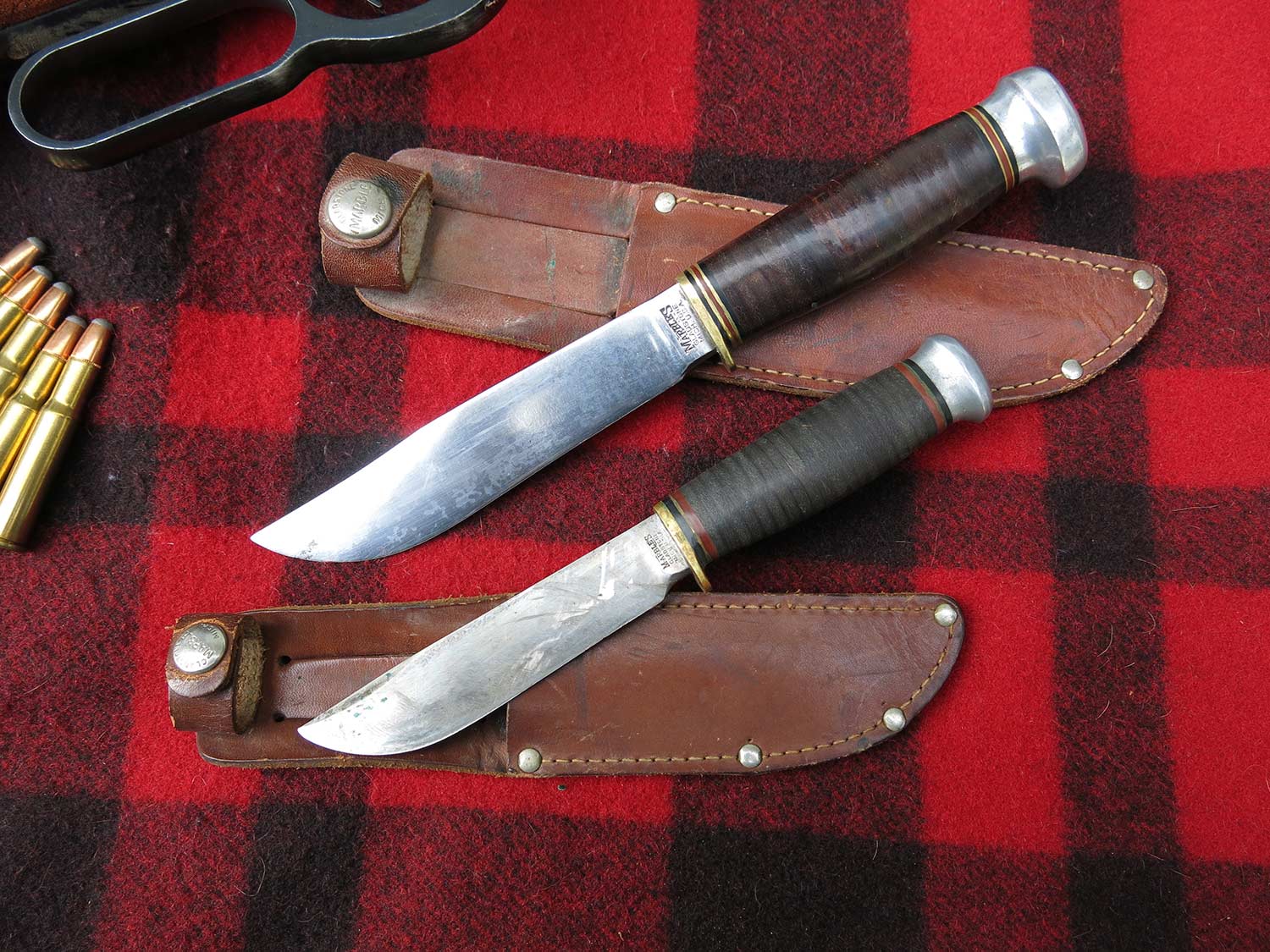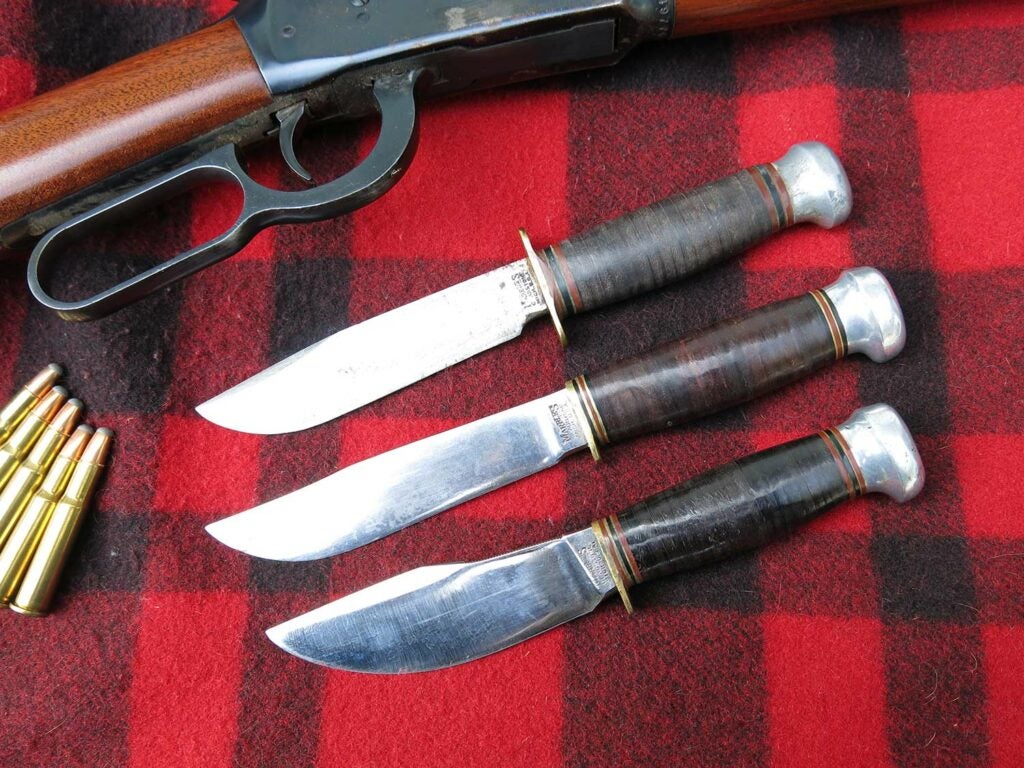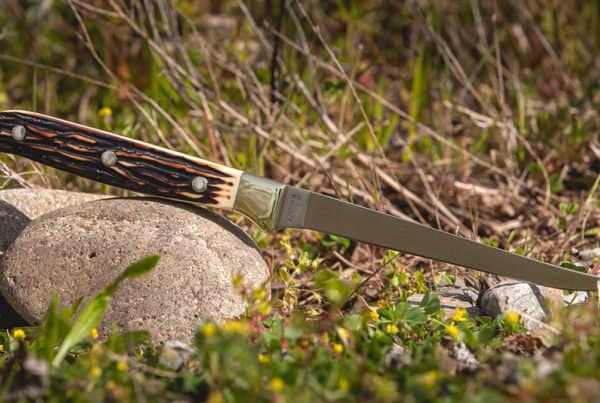The history of Marble’s hunting knives and their impact on outdoor cutlery for the last 120 years
In the years after the Civil War, “hunting” knives tended to follow one of three patterns—heavy-duty folders, traditional Bowie knives, and small utilitarian butchering type blades. Outdoor writers of the period all ridiculed the Bowies as being strictly, “Billy the Kid, dime-novel fantasies.” As for the butcher knives and the folders, they got the job done, but they didn’t have much flash. Then came Webster Marble.

The Ideal
Marble almost single-handedly turned the hunting knife into a must-have piece of outdoor gear for the well-turned-out sportsman. This started in 1899 with the Ideal model, which was available in a variety of blade lengths from 4 to 8 inches. While stag slabs were available at extra cost, most were handled in a feature pioneered by Marble—stacked leather washers. All had clip-point blades and a deeply-fullered edge grind (not a blood groove). Originally, the deep fuller was intended to allow the blade to be laid flat on a hone and sharpened something like a straight razor. Of course, the safety razor was soon to make the old cut-throats obsolete, and the Marble’s fuller became more of a trademark than a design feature. Early Ideals all came with a small, practical single handguard on the edge side of the blade, but for some reason, a less useful double guard replaced this in a few years. Marble tended to know his customers well, and if he thought a double guard would sell better than a single, then that was the way it was going to be.
The Expert
Marble’s next gift to the sporting cutlery world was the Expert sheath knife (5- and 6-inch blade lengths), introduced in 1906. This was a straight-backed, sheath knife with a slight clip-on, flat ground blade that swept to the point at the very end. While this may sound fairly conventional, no one else was making a similar hunting knife at the time. Marble first marketed this model as not being up to the same kind of hard use his Ideal was. Instead, it was supposed to be reserved for professional hunters, trappers, and guides with the experience to use a light, sharp blade in the field. That must not have been a very good marketing strategy as the cautions against hard use were soon dropped from their advertising. The Expert pattern is just a strong as any other knife in its general weight class when used for reasonable field tasks.
In 1929, Marble’s added a 4-inch-blade version of the Expert to its line called the “Sports Knife.” The Girl Scouts of America adopted it as their official sheath knife in 1930, and the Boy Scouts made it an alternative to the more expensive Woodcraft. A 4-inch blade would seem to be a very practical length for hunters, but the 3-¼-inch leather-washer handle made it a little difficult to grip for many field tasks. In any case, the knife continued in the line until 1960 when the handle was lengthened, and the model renamed the “Campcraft.”
The Woodcraft
Around 1915, Marble made what some consider his greatest contribution to outdoor cutlery, the Woodcraft sheath knife. While Marble never gave him credit, a hunting writer named George W. Brooks claimed to have designed the first Woodcraft in 1914. The wide, upswept, 4-½-inch, flat-ground blade was his version of the perfect big game and trapping knife. Modern hunters will automatically question the length of the 3-¾-inch handle, but this was intentional on the part of Brooks. He felt the proper grip when field dressing was to choke up on the handle with the base of the blade between your fingers. In any case, buyers must have questioned the length of the handle too, as, over the years, Marbles steadily increased its length. One strange side note to its history is that it was once the official sheath knife of the American Boy Scouts, from 1933 to 1940. I’m not sure who made that decision as it seems like the Expert or even the Ideal would have been better for camping chores. Maybe it was the Woodcraft name that sold them.
Copied by Everyone
As popular as the Marble’s line was with outdoors-men, it was their impact on the rest of the cutlery industry that really made a lasting impression. Starting in 1918, the English cutlery company, Wade and Butcher, began offering pretty much exact copies of Marble’s Ideal pattern. In short order, virtually every major cutlery company in the U.S., England, Germany, and Sweden began offering their own versions of Marble’s most popular knives.
Parts of this article are sourced from The Story Behind America’s First Hunting Knife






